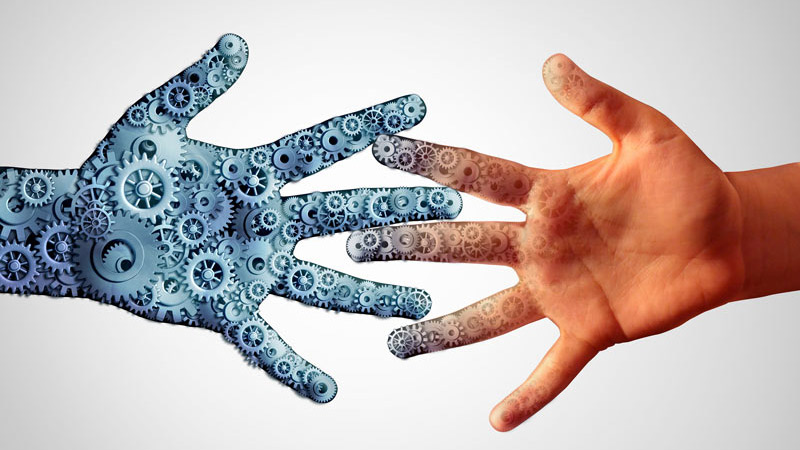End-to-end digitisation is important to speed up your processes and make your business more competitive. Read more here.
End-to-end, also written End2End or E2E, refers to a comprehensive process. This process includes a chain of actions that begins, for example, with a customer, triggers activities at your company and then ends again with the customer. The beginning and the end are therefore the same.
A customer orders a product from an online shop. The retailer packages the product, ships it, issues an invoice and the customer finally receives the desired goods.
When all steps in an E2E process - which can sometimes be very long, complicated and even complex - are done digitally, it is called end-to-end digitisation. Optimally, no human intervention is required in an end-to-end digital process.
When a customer orders software from an online shop, the system automatically creates a PDF invoice and sends it by e-mail. The buyer receives the software via download. Or it is a SaaS solution (Software as a Service), where the application is in the cloud and can be used without installation.
During the Corona pandemic, people who were vaccinated against the virus received a certificate. For this certificate, the patients had to go to a pharmacy with their vaccination certificate, where they received a slip of paper with an individual QR code. Afterwards, the patients photographed the QR code with their smartphone to have their vaccination status displayed in the CovPass app.
The process consisted only partly of digital elements. Therefore, numerous actions were performed by people (doctors, pharmacists, patients), which made the process cumbersome, error-prone and slow.
Digitisation is mainly about one thing: increasing efficiency. For example, when you plan to digitise your processes, you should always keep in mind that in the end you will have to use fewer resources in terms of time, expenses, means of production or manpower.
When each step becomes more efficient, the end result becomes more efficient. Through these economies of scale, you can, among other things, significantly speed up your processes and make them more cost-effective. In addition, you relieve your (perhaps already scarce) skilled staff because they do not have to do redundant and unnecessary tasks.
Your customers will also appreciate end-to-end digitisation. Processes that are simple, convenient, fast or even fun create a positive customer experience. And that gives your company an advantage in an increasingly competitive market.
What you should also not forget: Consistent digitalisation from start to finish or from End2End enables completely new, innovative business models. Business models that create a unique selling proposition for your company and thus a competitive advantage.
This is not a simple undertaking, because it consists of various elements and steps that build on each other.
For example, get extensive customer feedback at the beginning: What are your customers' wants, challenges and obstacles? How is your company responding to these pains and gains so far?
In addition, create an as-is inventory of what your processes and toolsets currently look like. Find out what problems there are in fulfilling customer wishes. And also look at how efficient the processes are. Some may be too slow, too expensive or no longer up to date.
Then develop a concept of how you can improve everything from end to end by digitising as much as possible. But don't make the mistake of simply transferring analogue processes into digital workflows! In the best case, develop completely new workflows that are leaner and forward-looking - among other things, via Robot Process Automation.
For example, you want to sell products via the internet. An online shop is an established solution for this. But think further, for example:
Possible solutions for this are chatbots for customer advice, RPA bots for the automation of recurring processes and a customer portal as a self-service platform.









